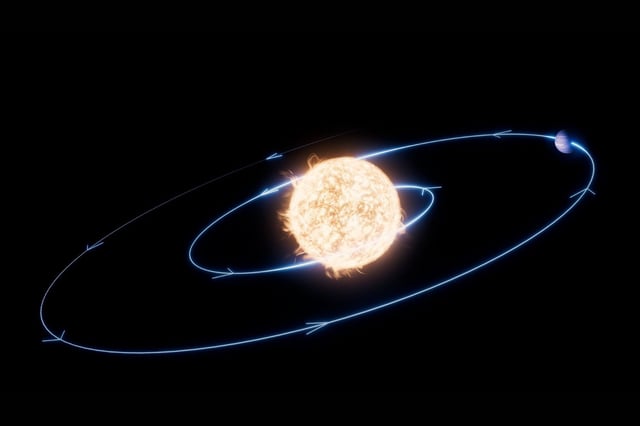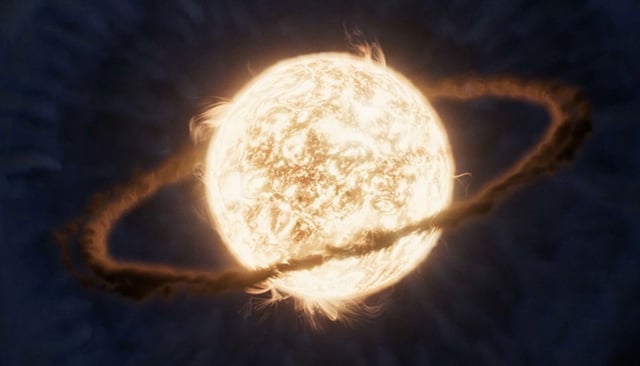Overview
- NASA’s James Webb Space Telescope provided the first direct observation of a planet being consumed by its host star, marking a milestone in astrophysics.
- The planet, similar in size to Jupiter, experienced a gradual orbital decay over millions of years before being engulfed by the star ZTF SLRN-2020, located 12,000 light years away.
- High-resolution data from JWST’s MIRI and NIRSpec instruments revealed the planet’s descent began as it grazed the star’s atmosphere, triggering a runaway collapse.
- The event produced observable features, including a hot disk of molecular gas and a ring of cold dust formed from expelled material cooling over time.
- This discovery offers transformative insights into the evolution and ultimate fate of planetary systems, including potential implications for our own solar system.

